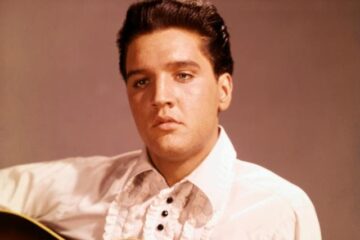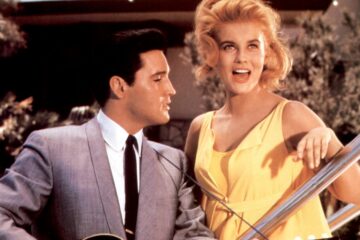Paul McCartney revealed there’s a secret chord in The Beatles‘ “I’ll Get You.” He and John Lennon wrote the song while still living in Liverpool. The songwriting partners didn’t know many chords back then, but they had recently learned a new one when they wrote the tune.
Paul McCartney and John Lennon wrote the song when they were still living in Liverpool
The Beatles’ “I’ll Get You” was the B-side of their 1963 hit single, “She Loves You.” However, Paul and John wrote it years before while still living in Liverpool.
In The Lyrics: 1956 to the Present, Paul wrote that he and his songwriter partner wrote the tune at John’s house on Menlove Avenue. John’s Aunt Mimi raised him starting from when he was a toddler. She was a strict, strong-willed woman who didn’t want her nephew to waste his life on music.
According to Paul McCartney, John was “the posh one,” living in a nice neighborhood, but Mimi hated when John’s friends came over to play music. She treated them like they were the worst company in the world.
In George Harrison: Living in the Material World, George Harrison explained, “John was always keen to get out of his house because his Aunt Mimi was kind of very stern and strict, and she embarrassed him.
“I remember going to John’s house once when I first had met him, I was still at the Institute, and we were trying to look like Teddy boys… I must have looked pretty good because she didn’t like me at all, she was really shocked. She said, ‘Look at him. Who is this, bringing this boy around to this house? Look at him; he looks dreadful like a Teddy Boy.’ And he’d just say, ‘Shut up, Mary, shut up!’”
Whatever his Aunt’s opinion was of his friends and music, John continued associating with Paul and George.
Paul revealed there’s a secret chord in The Beatles’ ‘I’ll Get You’
In The Lyrics, Paul spoke about the musical structure of The Beatles’ “I’ll Get You.” He thinks the tune has a “really effective opening.” A D major chord comes in as they sing “Oh yeah” in an octave.
“We’d learnt the sort of C, A minor, F, G, and D sequences – the straight, ‘triady’ things,” Paul wrote. “But then you start to juxtapose them a bit, and the opening of ‘I’ll Get You’ is an example of what happens. Otherwise, these are fairly standard chords.”
That is, until the lyric “It’s not like me to pretend.” Paul calls the chord under “pretend” weird. “It doesn’t quite belong, and that’s the secret of this song,” Paul wrote.
He thinks it “may be a bit much to say that the chord is commenting on the word ‘pretend’ – suggesting that the character in the song may not be taken at face value, that he’s actually pretending to feel, to present a feeling he’s not really committed to. That he might just be playing around.”
The general sentiment of The Beatles’ early songs, including “I’ll Get You,” is “pretty straight up.” Paul continued, “Not a lot of irony. And that’s why people liked, and like, these songs. They say what they mean. ‘It’s not like me to pretend / But I’ll get you, I’ll get you in the end.’
“Mind you, I think it’s fair to say there might be a little bit of schoolboy humor hovering around the idea too.”
Two future songs used ‘imagine’ in the same way as The Beatles’ ‘I’ll Get You’
In terms of lyrics, The Beatles’ “I’ll Get You” uses the “imagine” in the beginning verse. Paul said two other songs use the word in a similar sense: The Beatles’ “Lucy in the Sky With Diamonds,” with its “exhortation to ‘Picture yourself,’ and John’s “Imagine.”
“So it’s a filmic thing, as well as a literary thing,” Paul said. When he says “literary,” he thinks of the world of Lewis Carroll, who inspired him and John many times.
So, The Beatles’ “I’ll Get You” is complex, with its hidden chords and literary ties.



